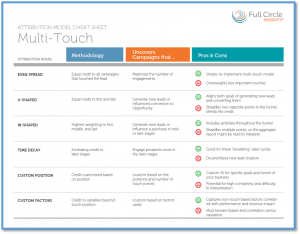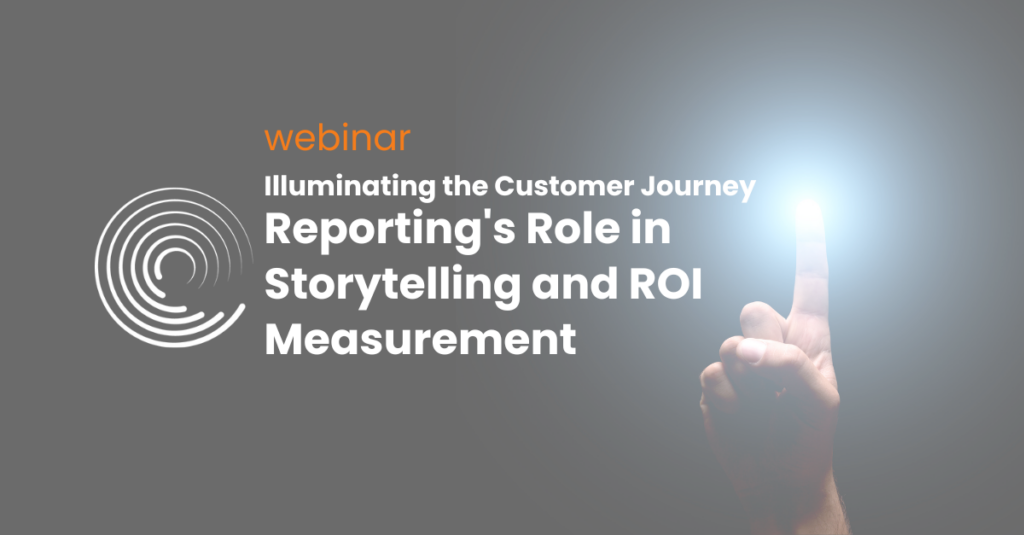Imagine the following CMO questions:
“What was our Whitepaper Campaign’s influence on the latest deal we closed?”
“How do I get a report on our campaigns’ total impact on revenue?”
“How should we allocate our marketing budget?”
The answer to these questions is the same: start with attribution metrics. Attribution enables you to measure campaign performance, whether it’s a campaign’s influence on a single deal or an entire channel’s impact on total revenue. Without connecting your campaign’s influence on deals and ultimately revenue, you are just measuring lead volume, in a silo disconnected from sales.
So, you want to consider measuring influence through attribution modeling but you think it’s a huge undertaking to implement in your organization. Let me tell you, it is not. Sure, attribution modeling can get complex, but only if you want to get very advanced with it. Let me break down the few steps to get you up-and-running:
- Get educated about what attribution can do for you
- Learn about picking the right attribution model for your business
- Shop for the marketing analytics solution that supports your attribution needs
1) Understand The Benefits
“When I put together the analytical reports, I report to the executives on 16 different divisions of sales.”
– George Verey, Marketing Operations Manager, Act-On Software
I quote the above to illustrate that attribution solves a complexity (reporting on campaign influence, along multiple dimensions, and to multiple stakeholders no less) that, once addressed, will make you wonder how you went so long without utilizing attribution. The bar for marketers has been set higher due to the greater amount of data we have and the desire to use that data to stretch the marketing dollar even further. In a brief webinar I hosted with Act-On Software, we go over the industry trends marketers face, break down attribution models, and share some real-world application and examples from Act-On Software.
2) Making Attribution Models Work for You
Now that you are convinced that you need attribution modeling to measure your campaign influence, the next step is to understand the different attribution models and what goals they help you accomplish. I review the different attribution models individually in the webinar above, but if you want the breakdown in a friendly readable format, head over to a previous blog post of mine, which includes a printable cheat sheet to reference for when you’re implementing or switching attribution models.
The takeaway? Whether you’re focused on generating new leads, converting them faster, or both (and more), there’s a model that works well for you. If you take a quick moment to consider the different models, you’d set yourself up for greater success out of attribution metrics.
3) How to Choose the Right Solution
So you understand the benefits of measuring campaign influence and know at least the basics of different attribution models. In order to get attribution metrics, you’ll need some system for the revenue allocation and the display of those campaign performance metrics. Now how do you go about picking such a system for your company? Well, you probably have some basic tools already, including your marketing automation, BI, and CRM systems. Heck, if you really need something quick and dirty, Excel allows you to take revenue dollar amounts and divide them using whatever calculation method you want. However, the key in getting the right system can be broken down into the following three factors:
- Multi-touch and custom model capability. While single-touch models are quite useful, missing out on multi-touch leaves you in the dark on a whole chunk of campaign influence metrics. So look for that capability. Even if you don’t plan on using multi-touch or custom factors in the near future, the support for it helps future-proof your attribution implementation and having multi-touch as an option allows you to adopt it when you’re ready.
- Side-by-side comparison of models. You’ll want to have a few models running simultaneously, customize or switch between them quickly, and even compare them side-by-side in order to derive different insights about your campaigns. This ability will also allow you to recognize quickly which model(s) you depend on more, and over time, fine-tune your attribution models.
- Reporting accuracy and granularity. We are all too familiar with the following two ways of humbling ourselves in a meeting: “Sorry, I don’t know why our marketing numbers don’t match your sales figures” and “I can give you the individual details underlying the data, but give me a few hours. Maybe a day.” Find an attribution solution that breaks down individual campaign influence without disconnecting the aggregate marketing numbers from the total revenue dollars. And if the reporting system is robust, you should be able to “double-click” into individual deals that make up the aggregate dollars.
I’m proud of Full Circle’s launch of Campaign Attribution, a product whose strong points include modeling capability, simultaneously running models, and detailed drill-down capabilities. Here’s a quote from a customer:
“Full Circle Insights is one of our most important marketing tools. Not only does it give us a bird’s-eye-view of our funnel milestones, but it also helps us maximize budgetary spending performance by illuminating the true revenue impact of our marketing efforts.”
– George Verey, Marketing Operations Manager, Act-On Software
Here’s a simple datasheet with a rundown on its features and learn what it can do for you.
Don’t Let Perfect be the Enemy of Good
I hope that I’ve piqued your interest in measuring campaign influence by implementing or improving your attribution solution. There is so much you can do, but I’ll leave you with the old “80/20” rule (which we invoke in this blog post on optimizing a marketing strategy:
That is, 80% of the value comes from the first 20%. A simple attribution model can provide you with actionable insights about your campaign performance. With just the tip of the iceberg, these insights will drive more informed marketing budget allocations and, ultimately, a marketing mix optimized for revenue.





